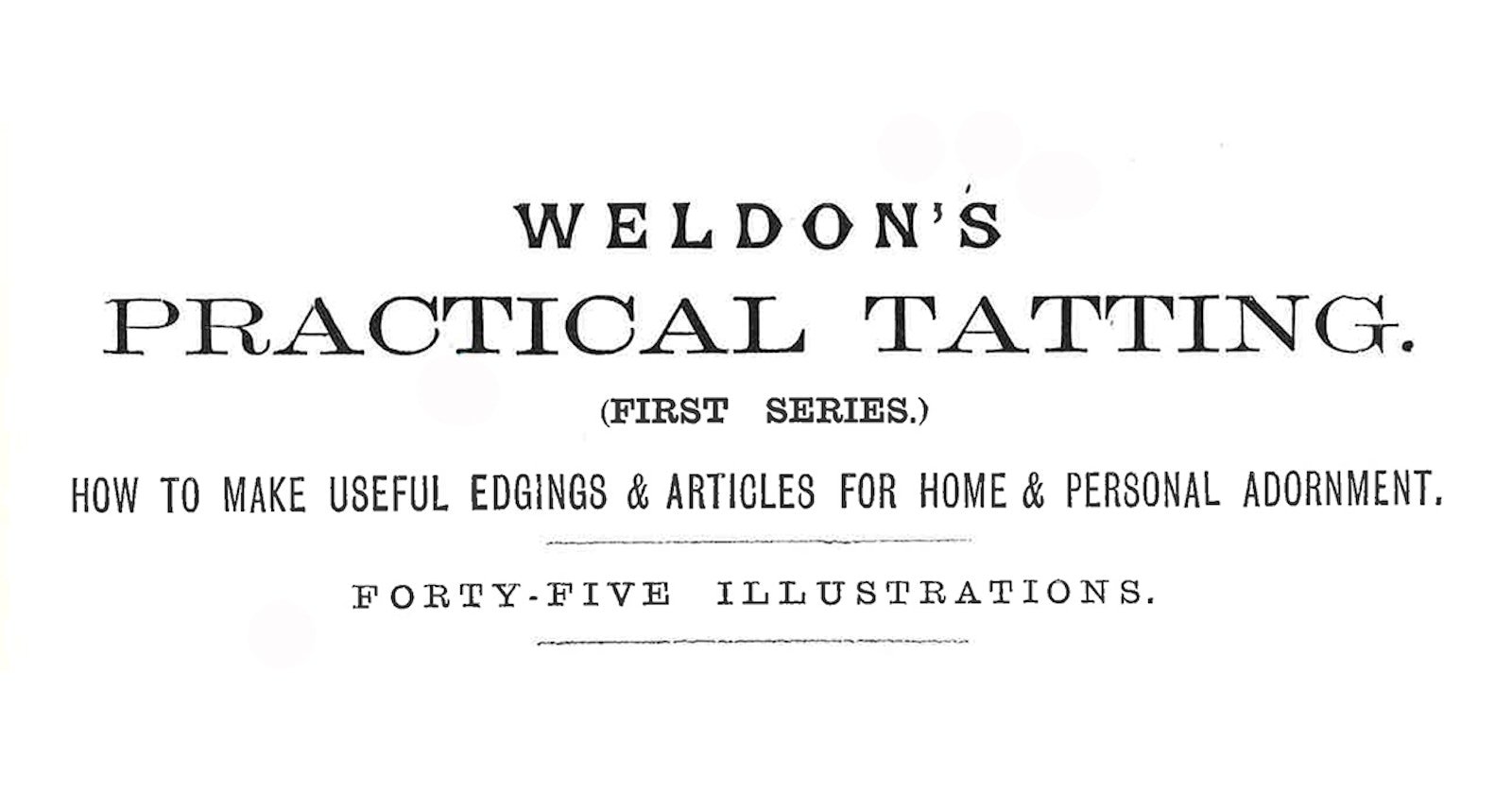Weldon’s Practical Needlework houses a wealth of information on Victorian tatting. Here’s our eighth installment in this series from Weldon’s Practical Needlework, Volume 4. The following are instructions for tatting knots and tatting with two threads. The material is reproduced here just as it appeared in England in 1889. No alterations or corrections were made.
Illustrations from Weldon’s Practical Needlework, Volume 4.
Fig. 14.—JOSEPHINE KNOTS.
THIS name is given to small bunches of stitches that are occasionally knotted upon the shuttle thread to ornament spaces between ovals and bars where a piece of long straight cotton would look poor. To work a Josephine Knot, make a loop in the usual manner with the shuttle thread, and work 4 single stitches, and draw up quite closely in a round bunch (see Fig. 14). A larger knot can be made by working 6 single stitches instead of 4 single.
Illustrations from Weldon’s Practical Needlework, Volume 4.
Fig.15.—TATTING WITH TWO THREADS.
THREAD your shuttle as usual, and work an oval of 16 double stitches, and draw up; reverse this oval, that is, turn it over, placing it between the thumb and finger bottom side uppermost, so that the two ends of cotton come at the top, the shuttle thread being still to the right-hand side, take a second thread—this may be used from the reel, or a length of cotton may be wound upon a second shuttle, as appears most convenient—place the end of the cotton behind the oval between the thumb and finger of the left hand, and pass a portion of the reel thread in a loop round the fingers, twisting it round the third finger of the left hand to keep the loop steady, make with the shuttle the usual movements and form 8 double stitches with the second thread which now is the loop thread; when the 8 double stitches are accomplished, again reverse the work, make a loop on the fingers with the shuttle thread, and being very careful to get the first stitch quite close to the stitches worked with the second thread, proceed with another oval; reverse the work again, take the second thread, loop it round the fingers, securing it by twisting it once or twice round the third finger, and work another straight bar of 8 stitches, and so on. In our illustration (Fig. 15) the uppermost of the two threads represents the shuttle thread, and the lower thread is the second or extra thread; you will see at a glance how the shuttle thread is covered with the stitches worked upon it by means of the second thread. Another way of tatting with two threads is to wind cotton upon two shuttles, and keep the cotton on one shuttle for special use as a foundation or shuttle thread, and the cotton on the other shuttle for special use as a loop thread; the shuttles had better be of distinct colours, one white and the other red, so as to be readily distinguished; by this method of working the cotton goes farther without knots, but the foundation thread cannot be drawn up like an ordinary loop to form an oval, so you draw the first and last stitches of the loop together, and join them by a small loop in the same way as the picots (see Fig. 11) are joined.
If you missed any part of this series on Victorian tatting from Weldon’s, you can catch up on all of the blog posts here. Find out more about tatting in our video download Shuttle Tatting with master tatter Georgia Seitz.



